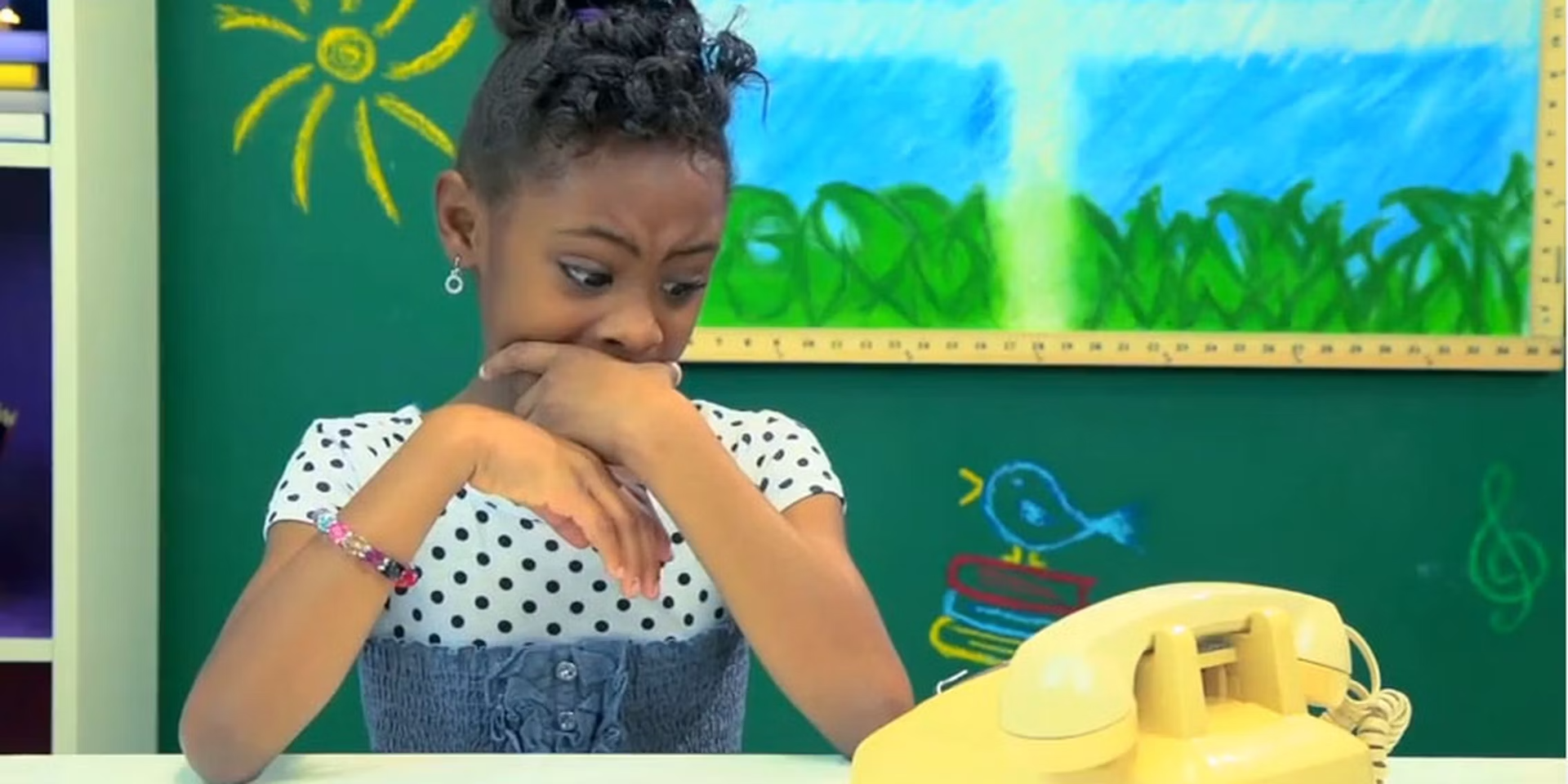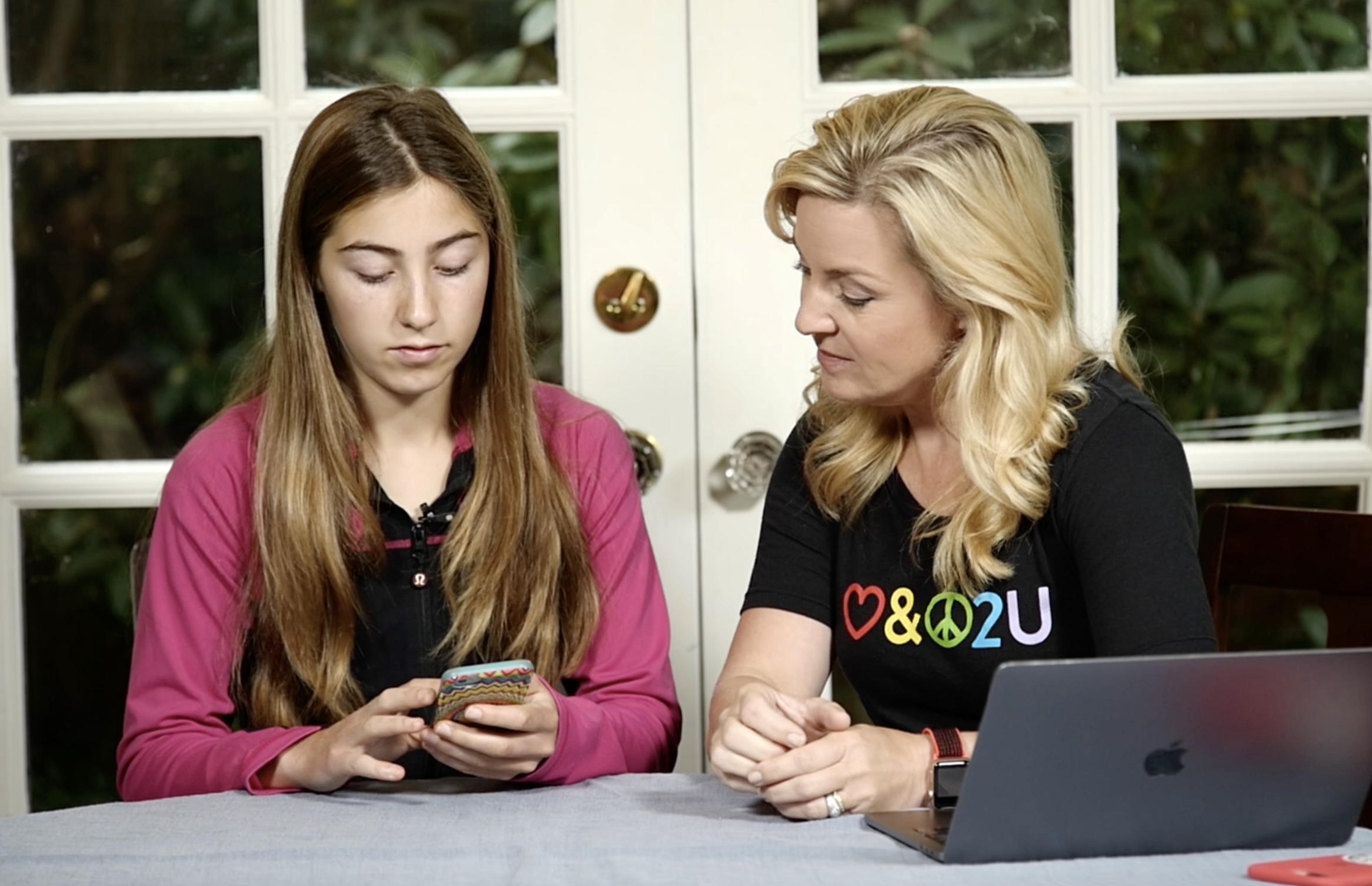
*A version of this story ran/aired on USA Today *
There’s no single “right” age to give a child a smartphone. Most experts say it’s best to put it off as long as possible to make sure children—and you—are ready to handle the myriad of risks around it.
This includes the potential for constant distraction, the perils of social media, exposure to predators, bullies, and many other issues their growing brains aren’t yet equipped to manage in a healthy way.
A global study of nearly 30,000 young adults released this past May by Sapien Labs, a non-profit that researches well-being and the impact of technology on mental health, showed that the earlier kids get smartphones, the more they struggled as young adults with “suicidal thoughts, feelings of aggression towards others and a sense of being detached from reality.”
But some kids might actually need a device for school starting around the age of 12. And some parents want a basic way to get in touch with their kids in an emergency, starting as young as seven or eight. So, how do we figure it all out and keep our kids safe?
Here’s what we’ve learned raising the first generation of connected kids: It can do more harm than good to give them too much, too soon, no matter how much they beg, cajole, wheedle, and whine about it.
I’ve talked about “training wheel” tech tools a lot. I think they are the best way to prepare kids—and parents—for the bigger, more complicated, potentially troublesome devices.
WHAT IS TRAINING WHEEL TECH?
Think of teaching your kids about tech the same way you teach them how to ride a bicycle. Start simple, show them the basics, and give them as much protection as you can. We make sure they wear a helmet, right? Think of basic protections such as ‘parental supervision’ and ‘time limits’ for tech in the same way. Then, as kids learn and get more confident, parents—at some point—need to let go.
Several parent friends of mine with preschool and elementary-age kids start off with an AirTag ($29) or Tile Tracker ($34.88). They put the little quarter-sized Bluetooth-enabled GPS discs in backpacks, on lanyards, and in wrist-worn bands to “see” their child’s recent location on a map.
This is not an Apple or Life360 (the company that owns Tile now) approved way to use its devices. Both companies say their trackers are for inanimate objects only, not kids or pets, but that hasn’t stopped anyone from using them as tiny digital watchdogs anyway.
Accessory makers are getting in on it too. I just reviewed Watchitude’s $22 Tag’d slap-band-style digital kids watch. It’s designed to slide an AirTag (sold separately) underneath the watch face, and it’s one of thousands of similar tracker accessories aimed at kids.
If you decide to go this route, realize the limitations and potential privacy concerns involved, and don’t think of it as a substitute for paying attention to your child and being a “present” parent.
“Parents get in trouble when they think of technology as a stand-in for good parenting,” family tech expert Sarah Werle Kimmel told me over the phone. “It’s a tool, nothing more, nothing less.”
SMARTWATCHES MADE JUST FOR KIDS.
Kimmel, who also created and runs the Family Tech Zone website, opted for a different first device to help keep track of—and in touch with—her then 10-year-old son. She started with Verizon’s Gizmo Watch, as a way to foster his independence while also providing her a little piece of mind.
She said it worked as advertised, but wishes it wasn’t locked into Verizon carrier coverage, which doesn’t work as well as some other providers in her area of Utah. Still, Kimmel said it did a decent job with “mostly accurate” GPS location data. She also said her son liked the activity tracker and was good about using the trusted contacts features when he needed to call or text.
“I made him use the watch until he showed me he could take care of it, use it appropriately, and then graduate to the next level of device when his age, maturity level, and needs increased,” Kimmel said.
SMARTPHONES JUST FOR KIDS.

I’ve been testing the top “kid-safe” smartphones for the past year, including Bark, Troomi, Gabb and Pinwheel.
Each specific device comes with its own set of pros and cons, and if you just want to know which one I recommend, it’s either Troomi or Pinwheel.
These two are hands-down the easiest to set up and use out of the box. The dashboards are simple, and they’re easy to manage with as many—or as few—controls as you want or need.
Troomi and Pinwheel provide the perks most parents want from tech for their kids. These phones let you keep tabs on who kids can text or call, give you the final say in what apps they can access and allow you to set device times (like turning “off” during school or bedtime). They also enable GPS location-gating and tracking.
I find Bark’s dashboard to be the least intuitive, but its monitoring service is really strong. For me, Gabb is the least worthwhile overall.
Kimmel agrees. “The only one I don’t recommend is Gabb. There is no internet available on the device at all. This means there is no browser and no social media apps. The phone only has the ability to talk and text, but you can’t limit contacts, how long your child spends on the device, and when they can use it. So, they could wake up in the middle of the night and talk or text with a stranger, and you would never know.”
Here are a few other important distinctions:
- Bark’s phone is designed to give kids pretty full access to everything but then alert parents if it finds “snippets of a potentially dangerous message” so that they can check in with their kids and make sure everything’s okay.
- While monitoring is its specific superpower, it can feel a bit like a “gotcha.”
- Kimmel shared a funny anecdote about this; she recently received a notification from her son’s device regarding potentially inappropriate sexual content. What was it for? He had Googled “bouncy balls” online. Kimmel says she shared a laugh with her son about it, but that parents have to be careful before coming down too hard on kids.
- Pinwheel is the only one that you can add to your existing family carrier, such as AT&T, Verizon, and Sprint.
- Troomi and Pinwheel have a curated app store providing access to content they deem safe, but parents can still decide whether to allow them.
- Bark allows access to all apps through the Google Play store, which includes social media.
Several people told me that iPhones, even with FamilySharing and Screen Time parental controls enabled, are the easiest for kids to work around and hide what they’re doing. There are entire Reddit threads and dozens of YouTube videos that teach kids how to hack their devices and sneak around behind parents’ backs. That’s why you have to pay attention, be engaged, and not set up a system to punish a child when they come to you for help.
“There’s never a point as a parent that you can check out on this. Tools are helpful, but nothing takes the place of having a [close] relationship with your kids,” Kimmel added.
In other words, be a mentor, not just an always-lurking hall monitor.
“My kids have never tried to circumvent the parental control apps like Bark that I use to keep an eye on them online because it isn’t adversarial. It’s not like I’m spying on them, or that they’re trying to hide things from me. We’ve always been open and honest, and looking out for them online is my job as their mom.”
Remember, your goal here is to help them learn and grow into empowered young adults with the ability to take care of themselves and others in this increasingly wired world.
WHEN IS THE RIGHT AGE TO BUY A CHILD A LAPTOP?
We can’t talk about training wheel tech, kids, and safety, without touching on laptops. Once again, the consensus on the “right” age to buy one specifically for your child depends on a lot of different factors.
Here are the questions I always start with:
- Why do they need it now, and what will they use it for?
- Does their school loan students Chromebooks or other devices?
- How much can you realistically afford to pay for one?
- Is your child ready for their own device?
- Do you have the time, energy, and know-how to use parental controls and establish family screentime rules?
These are all important considerations that will guide your buying process, and how you answer them helps guide you to the “right” device.
You can look to your school for advice here too. Some schools tell parents their kids really shouldn’t use screens much at all before fourth grade. And if they do, kids’ time should be monitored and limited.
For elementary school-age kids, consider using a shared family PC in a place where an adult can keep an eye on what kids are doing and how much time they’re spending on the device overall.
ARE CHROMEBOOKS BETTER FOR KIDS?
If you have more than one child and the family PC gets major traffic jams, consider an inexpensive Chromebook, which is great for basic-level computing. Just be sure to set it up as a “child” device out of the box, so that you can control settings and what kids can access. (I often recommend setting common-sense time limits, so the device automatically turns off when time’s up. This can help prevent meltdowns when time’s up. Also, consider turning off access to YouTube, video games, all social media, and anything with violence, especially without adult supervision.
The main cons to going for a Chromebook is that it might not be future-proof, especially if it’s super low-cost (in the $200-$300 range). While most everything you do on a Chromebook gets stored in the cloud, there will come a day when students need memory and storage on the device too.
You can either use a backup storage drive—I use the 2TB WD Drive for Chromebook ($79.99) or look for a Chromebook with at least 64GB of storage and 8GB of memory. That should be fine even as they get older and need to access several assignments offline.
WHAT KINDS OF LAPTOPS DO KIDS NEED?
There are dozens of decent options in the “under $500” category, and the two main things you need to look for here are memory and storage. Most parents with older kids (in other words, parents who have already gone through this) think the “right” age to get kids their own laptops is between 12 and 15. And that’s only if they’re mature enough to be responsible for it and need it for schoolwork or hobbies such as artwork, filmmaking, or even podcasting.
My daughter used the same 11’’ Macbook Air from 2014 until about two months ago, without any trouble whatsoever in terms of battery life, storage, memory, etc. That’s a long time for a single laptop, and we felt like we really got our money’s worth out of that one. Another set-it-and-forget-it-easy laptop is Lenovo’s Slim Pro 7, which is a new model I’m using right now. It’s light, thin, fast, and affordable, and has enough battery to get through the day. It’s also a 2-in-1 laptop that students can use as a traditional clamshell or transform into a tablet via the central rotating soundbar and hinge, which is great for schoolwork, as well as downtime.
SHOULD MY KIDS USE AI OR WILL THEY GET IN TROUBLE?

Here’s one I’ve never covered around back-to-school before, generative AI — it’s a super hot topic this year.
A recent survey by digital security company McAfee found that less than a quarter of parents (21%) have discussed AI with their children, despite a majority being concerned about it. The biggest worry? That kids might use it to cheat or that it could empower a whole new level of deepfakes and cyberbullying.
On the other though, many educators think it could be a powerful tool to help kids learn. As a result, several new “kid safe” AI chat tools are popping up to make sure youngsters have a way to explore this next frontier of modern technology, including:
- Free – for children ages 3-7, uses an animated character to introduce young children to interacting with an AI chatbot
- PinwheelGPT – for kids 8-14, based on ChatGPT. Removes explicit language and adult content and enables parental monitoring of all chats. (This is from the same company mentioned above that makes kid-safe phones.)
- Khanmigo – billed as Khan Academy’s AI-powered guide that can tutor students and act as an assistant for teachers.
- AI Chat for Kids – fun chat with AI for kids.
- AI Kids Club – AI chat learning app for children.
WHAT HAPPENS WHEN THE TRAINING WHEELS COME OFF?
In her new book, “Growing Up in Public: Coming of Age in a Digital World,” Dr. Devorah Heitner explains that the best outcomes happen when parents teach, empower, lead by example, and stay tuned in to kids’ shifting needs around tech-life support. In other words, don’t give up.
“We need to think about when we introduce these [tech tools] to our kids, how much support can we give them? Ideally, you want to do it one thing at a time. For instance, make sure they have a handle on texting before they add a social media app. You want kids to experiment safely and experience what works and what doesn’t for them, so they’re able to take a break when they need to,” Heitner said.
WHAT I GOT RIGHT…

My daughter is 22 now and grew up part of that first wave of this whole wired-world experimentation. I did a lot of things “right,” somewhat intuitively, though having this job helps too.
We started her with an iPod at age 10, to take photos, listen to music, and text with a few pre-approved contacts. She graduated to a basic flip ‘dumb phone’ at 12 for emergencies and to talk or text with me, her dad, and a handful of friends and relatives.
From there, I actually kind of pushed her into using my hand-me-down iPhone around the age of 14. She didn’t want it, because several of her friends had them and struggled with distraction. But, I traveled for work and wanted to contact and share more with her. The iPhone allowed us to talk, text, and message, as well as use apps like Life360 and Apple’s FamilySharing.
I was lucky. She was easy to parent. She followed the rules of ‘no devices in her bedroom overnight.’ She never got too carried away with video games. She tucked the phone in a drawer during homework and dinnertime. I knew her passwords and we agreed that I was allowed to look through her phone if I felt like I needed to for her safety. (I never did.) We talked about appropriate selfies and oversharing. When there was too much aimless screen time, usually mine versus hers, we put our phones down and went outside.
The part I got “right” was paying attention to her, and recognizing when she was—and was not—ready for the next big tech milestone.
WHAT I GOT WRONG…
Social media. I misjudged how toxic it could be for her during her teens.
She told me just the other day that she felt like social media, and Instagram in particular, fueled insecurity, anxiety, and an unhealthy comparison to others. She says the algorithm skewed toward negative messages around body image and disordered eating.
She’s glad I allowed her to use Snapchat and Instagram starting around the age of 16, “because otherwise I think I would have felt isolated,” she said, “but I wish the apps themselves were safer and more focused on mental health.”
This leads me to my final thought here, as we think about how to raise healthy and balanced humans in the midst of this ever-changing digital landscape: You know that whole saying about when you die, you won’t wish you worked harder or had more money, or whatever? I think about that a lot in terms of TECH.
Will we ever be glad we spent so much time on social media or answering an email from work in our off time? No. We will most likely cherish our relationships with family and friends and the moments of adventure, laughter, love, and “real” life we all shared. When it comes to all this new technology and raising kids, that’s really the biggest takeaway of all.
Read Jennifer’s latest columns at USAToday.com/tech or follow her @JennJolly on Instagram
THIS POST CONTAINS AFFILIATE LINKS, AND PURCHASES MAY GENERATE A SMALL COMMISSION TO HELP SUPPORT OUR WORK AT NO ADDITIONAL COST TO YOU.
OUR EDITORIAL TEAM WORKS INDEPENDENTLY FROM ANY ADVERTISEMENT DEPARTMENT RELATIONSHIPS.
